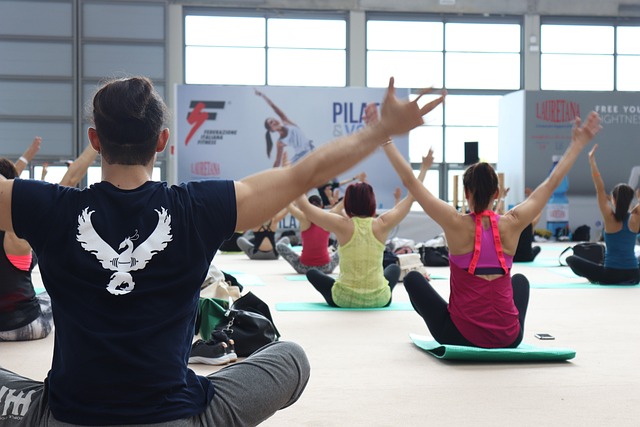Over the past decade, the way we think about where we live has undergone a dramatic transformation. Homebuyers and renters alike are no longer just looking for a roof over their heads—they’re seeking spaces that actively enhance their well-being while minimizing environmental impact. The shift toward wellness and sustainability in real estate is no longer a luxury; it’s an expectation.
The Rise of Wellness-Centric Homes
The concept of “wellness real estate” has gained significant momentum, especially in the wake of global health challenges and increasing awareness about mental and physical well-being. People want homes that support a healthier lifestyle, and developers are responding by incorporating features that promote both physical and mental well-being.
Some key wellness-focused home features include:
- Advanced Air Filtration Systems: Clean indoor air is crucial, as the EPA estimates that indoor air pollution can be 2-5 times worse than outdoor air pollution.
- Biophilic Design: Natural light, greenery, and materials that mimic nature help reduce stress and improve mood.
- Wellness Amenities: Homes and residential communities now feature yoga studios, meditation rooms, and state-of-the-art gyms, making it easier for residents to prioritize their health.
- Smart Sleep and Lighting Solutions: Circadian lighting systems adjust brightness and color temperature throughout the day, promoting better sleep and overall health.
Green Living: Sustainability as a Standard, Not an Option
Sustainability in real estate has evolved from a buzzword to a necessity. Homebuyers and renters are more conscious than ever about their carbon footprint, energy efficiency, and the long-term impact of their living spaces. Sustainable homes not only benefit the planet but also offer long-term cost savings for homeowners.
Key sustainable home trends include:
- Energy-Efficient Homes: Features like solar panels, high-performance insulation, and energy-efficient appliances lower utility costs and reduce environmental impact.
- Water Conservation: Smart irrigation systems, low-flow fixtures, and rainwater harvesting help conserve water, a growing concern in many regions.
- Sustainable Materials: Builders are increasingly using reclaimed wood, recycled steel, and eco-friendly insulation to reduce waste and improve energy efficiency.
- Electric Vehicle (EV) Charging Stations: With EV adoption on the rise, more homes and apartment complexes are incorporating charging stations as a standard feature.
Integrating Wellness and Sustainability: A Holistic Approach
Modern real estate developments are recognizing that wellness and sustainability go hand in hand. Homes designed with both principles in mind provide an optimal living environment that supports physical and mental well-being while reducing environmental impact.
A few examples of this integration include:
- Walkable Communities: Neighborhoods with pedestrian-friendly designs, green spaces, and easy access to essential services promote an active lifestyle and reduce reliance on cars.
- Smart Home Technology: Systems that monitor air quality, optimize energy usage, and provide real-time health insights are becoming standard in high-end and mid-range homes alike.
- Multifunctional Outdoor Spaces: From rooftop gardens to communal organic farms, developers are creating green spaces that encourage community interaction while improving air quality and biodiversity.
Why This Matters for Homebuyers and Renters
The demand for wellness and sustainability in housing isn’t just a passing trend—it’s a fundamental shift in how we define quality living. The benefits extend beyond personal health and environmental impact:
- Higher Property Value: Homes with green certifications and wellness-focused amenities tend to appreciate faster and command higher resale values.
- Lower Utility and Maintenance Costs: Energy-efficient homes reduce long-term costs, making them a financially smart investment.
- Improved Quality of Life: Living in a home that supports wellness and sustainability leads to reduced stress, better health, and an overall enhanced daily experience.
The Future of Housing: Where Do We Go From Here?
As technology advances and consumer preferences continue to evolve, wellness and sustainability will play an even larger role in real estate. Expect to see:
- More Regulations and Incentives: Governments may introduce stricter sustainability mandates while offering incentives for developers and homeowners to adopt green practices.
- Increased Smart Technology Integration: AI-driven home management systems will become more sophisticated, offering real-time adjustments for energy efficiency, air quality, and personal wellness tracking.
- Expansion of Wellness-Focused Communities: The rise of holistic communities that integrate fitness, mindfulness, and sustainable living into everyday life will become more mainstream.
Conclusion: A Smarter, Healthier, Greener Way to Live
The future of living isn’t just about aesthetics or location—it’s about creating environments that foster well-being while protecting the planet. Whether you’re buying, renting, or investing, prioritizing wellness and sustainability in real estate is not only a smart financial decision but also a meaningful step toward a healthier, more sustainable world. The next generation of homes isn’t just built for living—they’re built for thriving.

